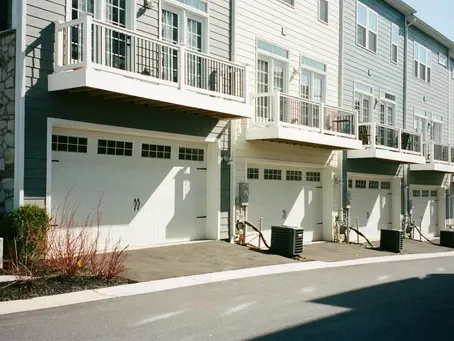Should your Community Association Allow Leasing?
The life of an association effectively begins when the developer turns over control to the members. At this moment, the owners are elected to the board and begin overseeing the creation and enforcement of policies, amongst other important administrative tasks. The board inherits policies found within the association declaration and bylaws. Many policies are acceptable to the board and left untouched. Leasing, however, is frequently a topic discussed, examined, discussed some more and then examined even more by boards. Whatever the initial leasing policy may be, it always remains subject to amendment.
Associations Have the Power to Create and Amend Leasing Restrictions
All condominium and community association declarations contain a section that allows them to be amended by the affirmative vote of sixty-seven percent or seventy-five percent of the owners. This section also applies to leasing. Unit owners become subject to and bound by all restrictions contained within an association’s governing documents when they become legal owner of a unit within the Association. This means they are automatically governed by whatever leasing policy exists at the time of purchase. Some associations outright prohibit leasing of units. Other associations permit a predetermined number of units to be leased at the same time. Still other associations allow all units to be leased without restriction. Although existing policy regulates leasing within the community, it may always be amended by the owners. What is the best policy to adopt on leasing?
Different Perspectives on Leasing
There is no “one size fits all” leasing policy for communities because associations are unique, diverse and have different cultures. Due to their individuality, each association should evaluate its options to find the policy that best matches the needs of its members.
Many associations prohibit leasing altogether. They believe the community should consist solely of owners that live onsite and share a deep interest in maintaining the property to its highest standards. Supporters of this perspective may also believe renters do not share the same desire to maintain the community in as excellent condition as onsite owners. Additionally, supporters believe the temporary nature of renters create increased turnover, which in turn speeds up the deterioration of common element/area property due to frequent moving. Backers of a “no leasing” policy usually plan on spending their entire lives residing in their unit.
Opponents of a “no leasing” policy typically view their unit as an investment vehicle more than a permanent home. They desire to secure the greatest return on investment possible when selling their unit. As such, they believe permitting leasing within the association ensures that potential investors remain interested in buying units within the association. This, therefore, captures the entire buyer marketplace without eliminating potential purchasers. Opponents of a “no leasing” policy also may have long term plans to convert their unit into an investment vehicle by renting it at some future date. Allowing the leasing of units would be mandatory to accomplish this objective.
Given the stark contrast in opinion on leasing, some associations strike a compromise. They establish a leasing policy that permits leasing for a predetermined number of units within the community. Usually, the leasing of units is determined on a first come, first serve basis. This type of compromise appeals to both supporters and opponents of leasing. It appeals to supporters because it ensures the community never is overrun with tenants. This helps curb supporters’ fear that the property will become run down and in disrepair. It slows the deterioration of common element/area property since fewer moves occur.
This policy appeals to opponents of “no leasing” because it allows them to market the sale of their units to potential investors whenever they choose to sell. It also affords them the option of leasing their units should they wish to hold them as investments.
Importance of Clear Leasing Language
Regardless of the specific type of leasing policy a community adopts, the policy itself must be clearly written and easy to understand. An ambiguously written policy will cause confusion and may give rise to large scale disputes and possible litigation.
For example, an association may have a leasing policy that allows twenty percent of units to be leased. However, it fails to include specific language that outlines how the policy is implemented. Owners lease their units at will. This causes more than twenty percent of units to be leased. In such a situation, it is extremely difficult to reduce the number of leased units below the twenty percent threshold; each owner claims their unit was first to be rented and they refuse to provide signed lease agreements. This leaves the board and association stuck and almost unable to enforce the leasing policy.
This dilemma can be avoided and it underscores the importance of utilizing legal counsel to help write leasing policies. Clear and concise language enables swift and effective policy enforcement. After all, without enforcement, policies are meaningless.
For more information and tips on Association topics visit www.shifrinlegal.com.
Shifrin Legal







Chicago Office
2335 S. Michigan Ave., Floor Two
Chicago, IL 60616
Tel: 312.470.2276
Email:
MJS@shifrinlegal.com
Northbrook Office
3400 Dundee Rd., Suite 360
Northbrook, IL 60062
Tel: 847.400.0059
Email:
MJS@shifrinlegal.com
Copyright ©2018- 2025 Shifrin Legal, Inc. All Rights Reserved by
Olive + Ash. Managed by
Olive Street Design




